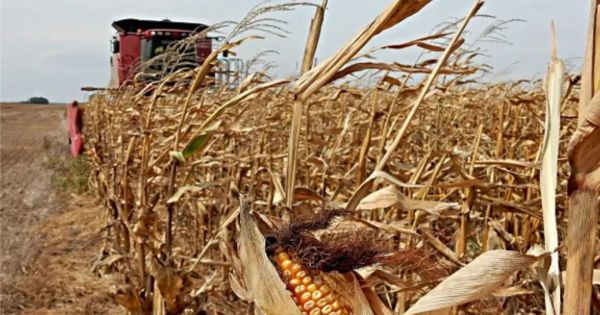Domestic soybean and corn prices close to 2021 values

Soybeans and corn show a relative decrease in their domestic prices much higher than in previous years.
After reaching all-time highs with the overall outcome of the Russia-Ukraine crisis, domestic prices of soybeans and corn showed successive downward trends. The reason for the lower prices is in part due to seasonal pressure from the Argentine thick harvest. With the start of the new corn campaign in March and the soybean campaign in April, prices are expected to fall as the coarse grains are harvested and exported.
However, this year was marked by a particularly pronounced downward trend for coarse grains. Since nominal highs in mid-March, soybean prices have accumulated 25%, considering CAC prices in peso measured in BNA buyer dollars. This panorama is very different from what happened in previous years. Between April and the end of July 2021 and 2020, domestic soybean prices showed an increase of 8.8% and 0.3%, respectively. If we go to the 2017-2019 triennium, we find a decrease of 2.2%; 7.5% and 2.2% for the same period.
In the case of corn, the drop in prices is more pronounced. Yellow bean fall accumulates about 31% of the annual maximum for March. Losses were also noted in previous years, albeit relatively minor. In the past five years, an average decrease of 6.7% was recorded for the same period.
In this bearish framework, domestic dollar prices are 14% and 13% higher than last year’s values for the respective cases of corn and soybeans. Looking at US inflation at 9% year-over-year in June 2022, it is clear that prices in real terms are not far from the values observed last year.
Internationally, prices in Chicago showed significant increases during the week. Uncertainties about reopening shipments in Ukraine combined with rising temperatures in US production areas have led to cumulative increases of 9% in corn and 12% in soybeans in the past four rounds. Climate plays a particularly important role in light of the critical period in which coarse crops are found in the United States.
South Korea, the emerging partner of Argentine corn
In the first five months of the corn campaign, two countries more than 17,000 km from Argentina accounted for more than a quarter of the foreign trade of yellow grain. In this sense, Vietnam emerges as a strategic partner, maintaining its position as the first buyer of corn in the last four campaigns, although its purchases decreased in this last campaign.
On the other hand, the most interesting growth in recent years has been observed in South Korea, which moved from buying small quantities of corn until 2019, when it began to be in strong demand for Argentine corn. From not exceeding 1% of purchases ten years ago, South Korea now stands out as the second largest buyer of Argentine corn.
Road to 2030, more economic growth for major buyers of soybeans and corn
According to new projections from the Harvard Growth Lab, China, Vietnam, Uganda, Indonesia and India are expected to be the fastest growing economies by 2030. Average per capita GDP is 5.82% per year through 2030. Although the economic boom has slowed down compared to decades Finally, the Asian giant will once again consolidate itself as the world’s fastest growing economy. For their part, Indonesia, Vietnam and India are aiming to exceed 5% average annual growth through the end of the decade.
These forecasts are encouraging, considering that these four trading partners account for about a third of Maz and Soybean’s foreign trade. In this sense, in addition to being the main buyer of corn, Vietnam leads the soybean meal buyer’s platform. In addition, Indonesia ranks second in demand for this important Argentine industrial product. Similarly, China is the first buyer of Argentine soybeans, while India demands the bulk of soybean oil which is exported in our country. On the other hand, this lab estimates an average growth for Argentina of 1.85% annually until 2030.

“Award-winning zombie scholar. Music practitioner. Food expert. Troublemaker.”









